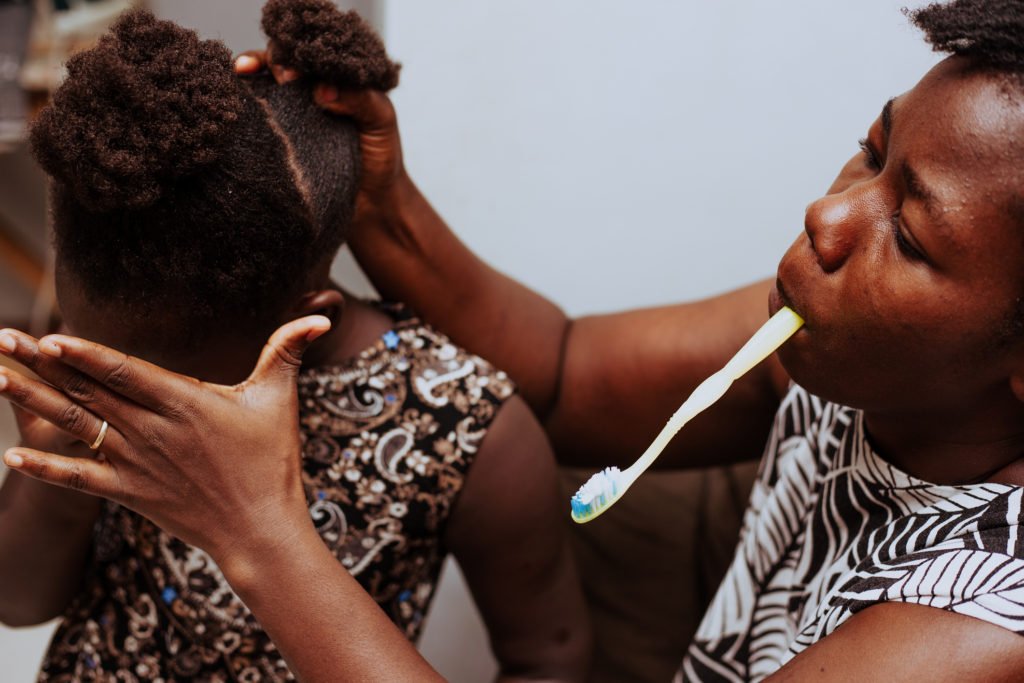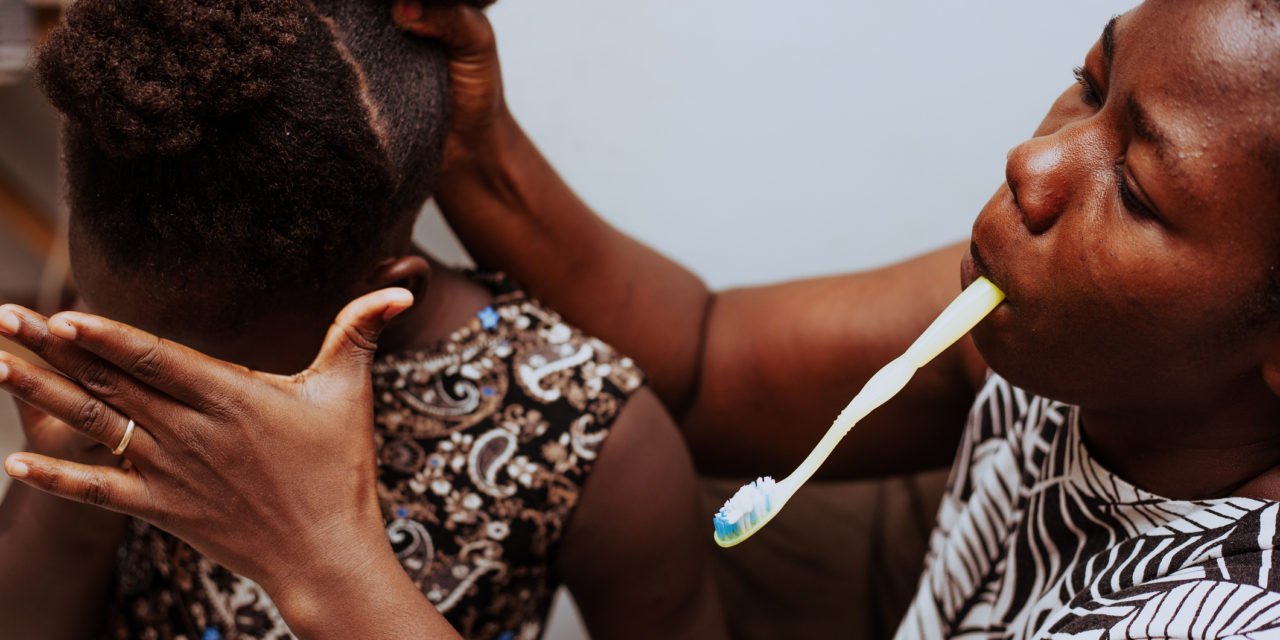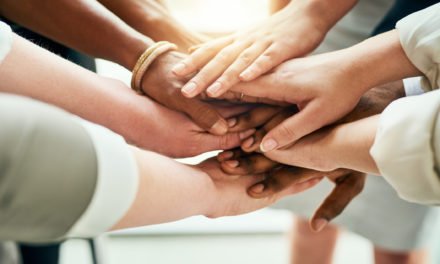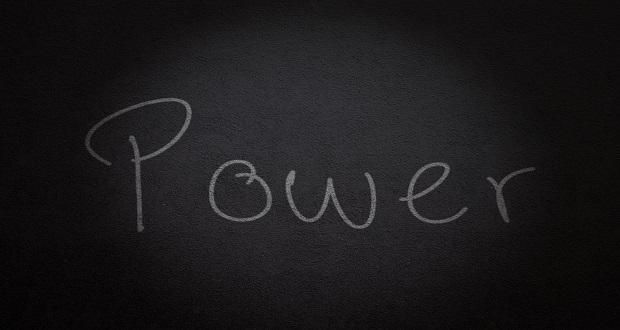
My grandmother was a stunningly beautiful woman. You could see the mix of races permeating through her veins. When questioned about her ethnicity, she’d let you know that she was Black, period. She was raised down South during the Segregation Era where equal access to bathrooms, water fountains, and restaurants was not considered a birthright for people of color. This experience left an indelible mark on her. So, when questioned about her heritage, her response reflected the pride she had as a Black woman.
My grandmother was a stunningly beautiful woman. You could see the mix of races permeating through her veins. She’d let you know that she was Black. Period. Reflecting the pride she had as a Black woman. Share on XI spent a great deal of time with my grandmother growing up. I recall the vast majority of family, friends, and strangers complimenting her pretty curly hair. I questioned why she received so much attention and learned that she inherited the “good hair” gene. “Good Hair,” as described by The Perception Institute, is identified as fine, minimally processed, growing, and easy-to-manage hair.
To some, my grandmother’s hair told a story of proximity to the Euro line. To others, it was a reminder of the trauma my ancestors endured while in captivity. While my grandmother’s hair was considered a beautiful and coveted Eurocentric feature, it did not shield her from the mistreatment faced by many people of color at that time. Despite what was presumed as an advantage, my grandmother experienced and navigated life as a Black woman.
My grandmother never made her hair her identity. However, in the Black community, her “good hair” suggested she had “other” ethnicities and people were curious as to what they were. They were even more curious as to why the gene skipped over a good portion of the family.
My grandmother had four daughters, none of whom claimed to have inherited the “good hair” gene. I was vying for that spot. I was awestruck with her fine curly hair. And as her first and assumably favorite grandchild, I wanted something that connected us. I recall asking a family member if I had “good hair” like grandma. There was a chuckle followed by a firm no. I remember feeling so disappointed. If my hair was not good, did that mean it was bad? I began to question myself. This conditioned me to believe that “good hair” was better hair. I started internalizing these messages and wondered if my textured hair was good enough? This exposure to “hairism” (the belief that one hair type is superior to another) was ingrained in my psyche (Cobb, 2019). These collective experiences likely initiated the “my hair is not good enough” injury.
I recall asking a family member if I had 'good hair' like grandma. There was a chuckle followed by a firm no. I felt so disappointed. If my hair was not good, did that mean it was bad? I began to question myself. Share on XThere would be six births in the family before the so-called “good hair” gene made its resurgence again. My younger cousin was the sole heir to the throne. When I first saw her, she had a head full of straight, jet-black hair. It was soft, silky, and beautiful, much like the doll babies I had at the time. I started to understand what all the fuss was about. I observed everyone talking about the new baby with the good hair. I even heard that someone prayed she’d have my grandmother’s texture. I wondered why my mother didn’t pray that same prayer. I was too young to understand the science behind genetics. I remember people stating that my cousin was the “one” in the family to inherit good hair. People linked her hair to her identity much in the same way as they did with my grandmother.
It was obvious that I was not part of the good hair club. I tried to replicate this pattern through the excessive use of hot combs and perms. There were plenty of burn marks on my forehead to show for it. I was terrified of the hot comb and would tense up every time someone ran it through my hair. Traumatizing as this experience was, I always pushed through pain to achieve my desired look. To say beauty hurts is an understatement. When my mother’s patience ran thin with the press and comb, she switched to using box perms on my hair. This self-inflicted abuse of my crown went on for years.
I wanted to be proud of my locks, but my beliefs did not allow me to fully embrace my natural strands. I knew something had to change. I started seeing a natural stylist who taught me how to celebrate and love on my natural hair. When I started transitioning, I was not sure I could get the results I wanted or follow through with the process. My hairdresser said, “if you love your hair, it will love you back.” Her words resonated with me and inspired the beginning of my natural hair journey. I started to dismantle the beliefs I learned as a child and began to accept the full beauty of my tresses.
I wanted to be proud of my locks, but my beliefs did not allow me to embrace my natural strands. I saw a natural stylist who taught me how to love on my natural hair, saying, 'if you love your hair, it will love you back.' Share on XI learned that hair was important to our cultural identity. In traditional African societies, hair was linked to a person’s tribe, family, or social status. After migrating to America through the transatlantic slave trade, African traditions were nearly eradicated as slaves were forced to adopt new beliefs and cultural norms (Byrd & Tharps, 2014). The negative perceptions of Black hair forced the assimilation of Eurocentric beauty standards on enslaved Africans. We not only lost our freedoms, but most of our cultural identity.
The negative perceptions of Black hair forced the assimilation of Eurocentric beauty standards on enslaved Africans. We not only lost our freedoms, but most of our cultural identity. Share on X
But what is the impact to children when Eurocentric features are aggrandized within their community? Will young Black girls question themselves as I did? Will they develop a healthy sense of self, or look elsewhere to identify as beautiful? At one time, I believed I needed to be “other” in order to be celebrated. I would often conform to Eurocentric beauty standards in an effort to be validated. This belief inferred that being Black alone was not enough.
What if I were encouraged to celebrate my natural hair? If I were taught how to care for and accept my God given locks? What if I were reminded of how beautiful, unique, and perfect my hair was? The reinforcement of these positive messages could have saved years of damage to my mane. Like many Black families, mine was not immune to the harmful views passed down through intergenerational trauma.
Nevertheless, my family members made sure to instill in me a sense of Black pride. Some wore their hair in Afros while others wore their hair straight. They celebrated Black heroes and exposed me to the myriad of styles, shades, and sizes within my community. My family affirmed me in many ways and collectively encouraged my choice for healthy expression. I can do better because I know better.
We’ve come a long way in the Black hair movement. I am overjoyed to see little Black girls rocking their natural hair and embracing their curls. I’m inspired by the many Black households who are raising children to accept and love their crowns. We are challenging the status quo and redefining stereotypes. I now get to tell my younger self a different story — one that celebrates the richness of my culture and amazing history. I’ve always been enough, and I get to define my own beauty standards.
I am overjoyed to see little Black girls rocking their natural hair and embracing their curls. I’m inspired by the many Black households who are raising children to accept and love their crowns. Share on X
References:
Bero, T. (2021, October 15). Tangled roots: Decoding the history of black hair | CBC Radio. CBCnews. Retrieved March 13, 2022, from https://www.cbc.ca/radio/ideas/tangled-roots-decoding-the-history-of-black-hair-1.5891778
Byrd, A. D., & Tharps, L. L. (2014). Hair story untangling the roots of black hair in America. St. Martin’s Griffin.
Cobb, T. (2019, February 17). Let’s talk hairism. AfroMation. Retrieved March 13, 2022, from https://timiacobb.home.blog/2019/02/17/lets-talk-hairism/
Jahangir, R. (2015, May 31). How does black hair reflect black history? BBC News. Retrieved March 13, 2022, from https://www.bbc.com/news/uk-england-merseyside-31438273
Uhai. (n.d.). Hair & history: A short story on the evolution of hair in the African American community. Uhai. Retrieved March 13, 2022, from https://uhaihair.com/blogs/news/hair-history-a-short-story-on-the-evolution-of-hair-in-the-african-american-community
What is “hair bias”? Perception Institute. (2020, June 17). Retrieved March 13, 2022, from https://perception.org/goodhair/hairbias/



















